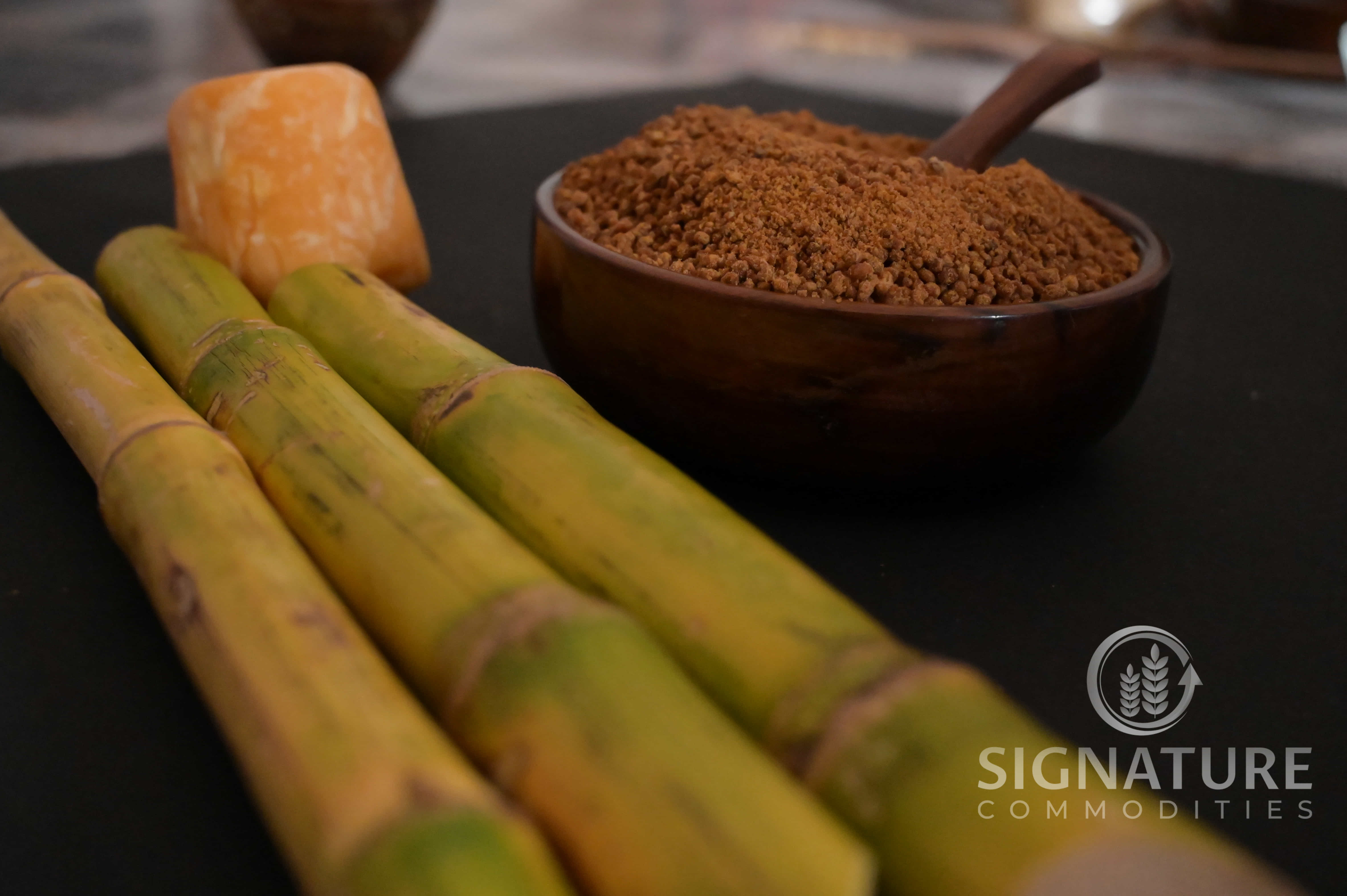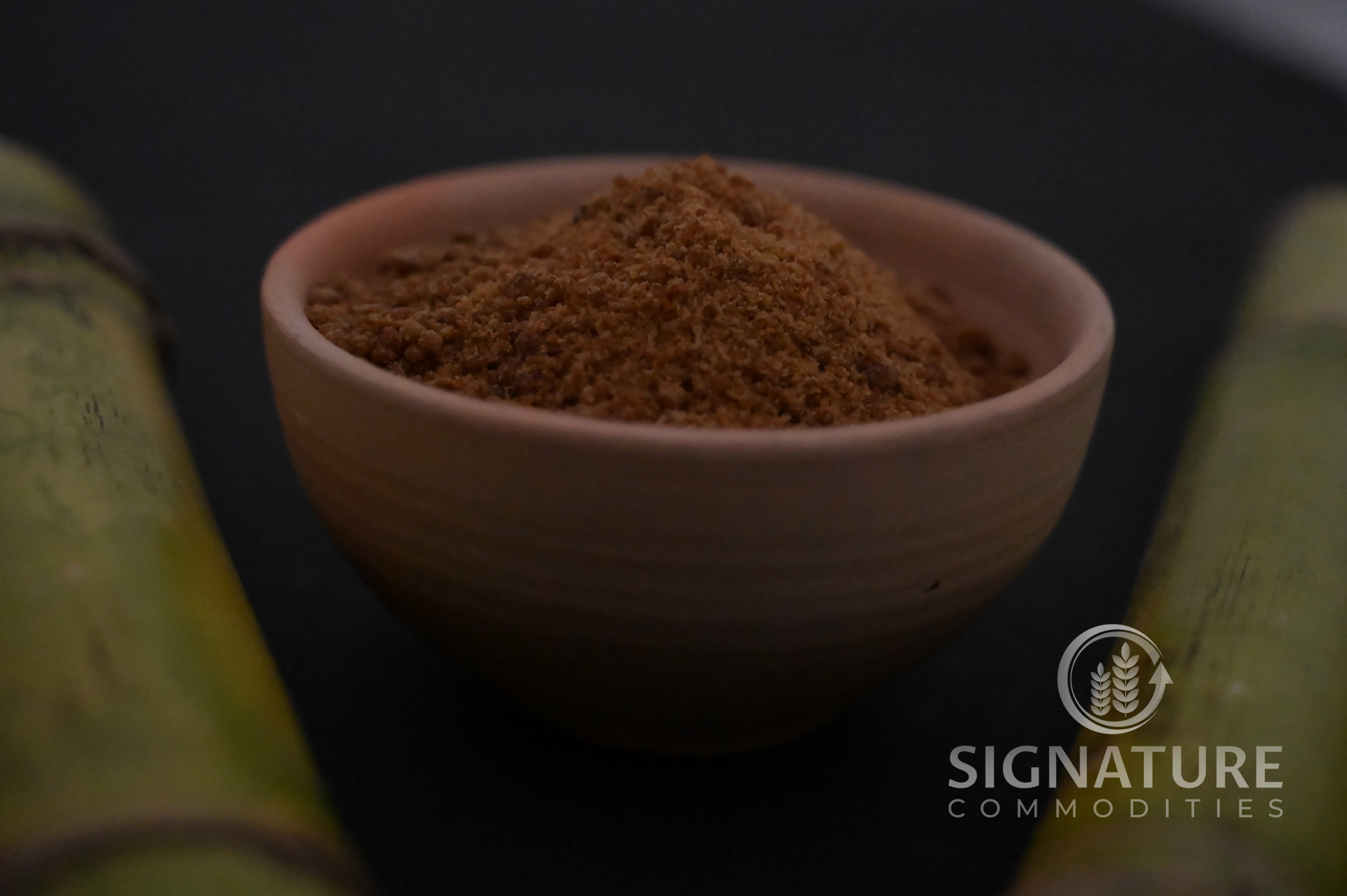Jaggery Powder
Jaggery is made by evaporating the water from sugar cane juice or palm sap. It is sold as a block, liquid or granules.
Jaggery is a traditional uncentrifuged sugar that is a concentrated product of date, cane juice, or palm sap (see palm sugar) without separation of the molasses and can vary from golden brown to dark brown. Jaggery is a concentrated product of date, cane juice, or palm sugar without separation of the molasses and crystals, and can vary from golden brown to dark brown in colour.
Jaggery, also called gurh, is used as an ingredient in sweet and savoury dishes across India, Pakistan, Bangladesh, Nepal, Sri Lanka as well as in Afghanistan and Iran. For example, a pinch of it is sometimes added to sambar, rasam, and other staples.
Jaggery is added to lentil soups (dāl) to add sweetness to balance the spicy, salty and sour components, particularly in Gujarati cuisine. Jaggery is used extensively in South India to balance the heat of spicy foods. It is also known to stir heat on the body, which causes sweating, a way for the body to cool down in the high summer heat.
Jaggery powder is extensively used for preparing varied sweets and eatables. It is widely demanded in the market because of its medicinal properties. Jaggery powder is a rich source of iron and other required minerals salts.
Jaggery is a type of unrefined sugar made from sugar cane or palm. Much of the world’s production takes place in India.
How is it made?
Jaggery is made using traditional methods of pressing and distilling palm or cane juice.
This is a 3-step process (3):
Extraction: The canes or palms are pressed to extract the sweet juice or sap.
Clarification: The juice is allowed to stand in large containers so that any sediment settles to the bottom. It is then strained to produce a clear liquid.
Concentration: The juice is placed in a very large, flat-bottomed pan and boiled.
During this process, the jaggery is stirred and the impurities are skimmed off the top until only a yellow, dough-like paste remains.
The color can range from light golden to dark brown. This is important, since the color and texture are used to grade the jaggery.
Health Benefits:
- Improved Digestive Health.
- Anemia Prevention.
- Liver Detoxification.
- Improved Immune Function.



